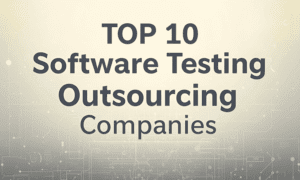Startups increasingly rely on cloud infrastructure to power their applications, store data, and scale operations efficiently. While the cloud offers flexibility and scalability, it also comes with the challenge of cost management. Many startups struggle with ballooning cloud expenses, which can quickly erode profit margins if not adequately controlled. The good news is that reducing cloud costs does not have to mean cutting down on performance. By implementing innovative strategies, businesses can optimize spending while maintaining the speed, reliability, and scalability needed to stay competitive. For those looking to learn more about the best tools to maximize cloud expenses, selecting the right FinOps solution is a crucial step.
Understanding Where Cloud Costs Can Spiral
Inadequate resource utilization is the leading cause behind excessive cloud expenses for startup businesses. Cloud providers charge customers based on their use of pay-as-you-go resources even when they remain unused or underutilized. Companies tend to overlook continuous instance operation even when it is unnecessary and provide excessive computing power for tasks that do not need it. Lack of consumption visibility leads to uncontrolled cost increases.
The excessive use of on-demand pricing models leads to increased expenses in cloud computing. This pricing model proves costlier than reserved instances or committed-use contracts because of its convenience feature. Startup companies focusing on expansion often fail to study cloud utilization patterns and discover better pricing options. Startups pay higher than required costs for their computing and storage resources.
The expenses related to data transfer often appear unexpectedly to businesses. Transferring enormous amounts of data between cloud regions or outside a cloud provider’s network leads to major expense bills. Startups that use multiple cloud providers with substantial data movement often encounter hidden expenses that reduce their financial performance. Cloud cost optimization requires a complete comprehension of all hidden expenses.
Strategies to Cut Cloud Expenses Without Losing Performance
Startups should establish proactive cloud management approaches to maintain operational efficiency and cost control. The first essential move requires resources to be sized appropriately for actual workload needs. Many businesses provide more CPU and memory than necessary instances, leading to wasteful spending. Startups can maintain equivalent performance levels through proper workload analysis and instance size modifications, reducing their overall expenses.
Auto-scaling implementation provides startups with an effective method to reduce their expenses. Auto-scaling enables resources to adapt their capacity automatically according to demand fluctuations rather than maintaining constant full-capacity operation. The pay-per-use model allows startups to pay for actual resource consumption to avoid unnecessary expenses while their operations maintain peak performance.
Startups that can predict their workload patterns should consider using reserved instances or savings plans as a cost-saving strategy. Startups can access significant cost savings through cloud provider discounts, which increase as they extend their term commitments beyond on-demand pricing. Businesses that analyze their historical usage patterns can make confident decisions about price discounts that lead to significant long-term cost reductions.
The Role of FinOps in Cloud Cost Optimization
The discipline of Financial Operations (FinOps) helps businesses achieve cloud expense control through three key elements: visibility, accountability, and optimization. Startups that adopt FinOps principles achieve real-time cloud spending visibility to distribute budgets strategically while guaranteeing cloud investments support business objectives. Startups should handle costs and optimize resource utilization in advance to prevent their expenses from spiraling out of control.
The core element of FinOps involves providing complete visibility into costs. Cloud cost transparency remains challenging for many startups because they struggle to identify their spending excesses. Organizations implementing FinOps tools receive detailed cost breakdowns, which help them discover unnecessary spending, optimize their workloads, and enforce budget restrictions. Startups benefit from this specific insight to make data-based decisions that lead to optimal operational efficiency.
Conclusion
Cloud cost management does not require startups to sacrifice system performance. Businesses can optimize spending while maintaining application efficiency and scalability through a strategic management approach to cloud deployment. Startups can reduce expenses without compromising quality through resource rightsizing, auto-scaling implementation, and cost-saving plan commitment. Implementing FinOps enhances cost control through financial accountability functions and optimized cloud usage optimization. Startups that implement proper strategies will preserve their market position while avoiding excessive expenses on cloud infrastructure.

































